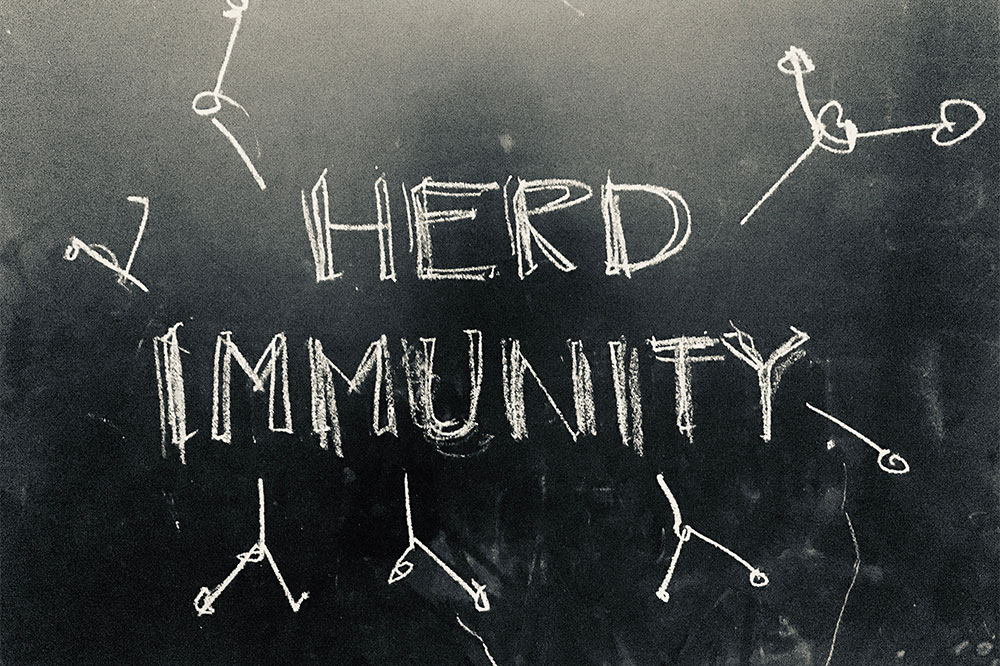
Understanding the threshold of herd immunity
Herd immunity, or community immunity, is when a significant proportion of a population becomes immune to a contagious disease through vaccination or prior infection, providing indirect protection to those exposed. The disease can no longer spread efficiently when a large enough fraction of the population is immune. Herd immunity is a key concept in public health because it can help protect those at risk of infection, such as young children or immunocompromised people.
Understanding herd immunity: Thresholds and impacts on disease spread
The herd immunity threshold is the percentage of a population that must be immune to a specific infectious disease to acquire herd immunity. This cutoff fluctuates according to the disease’s contagiousness, the vaccine’s efficacy, and other elements.
The herd immunity barrier for highly contagious illnesses, like measles, is typically between 90% and 95%. This indicates that 90% to 95% of the population must be immune to measles from vaccination or prior illness to attain herd immunity.
The herd immunity threshold may be lower for diseases like influenza that are less contagious, since the sickness is more unlikely to spread from person to person. The herd immunity threshold is not a constant value. It can vary based on several variables, including shifts in the disease’s infectiousness, the appearance of new variations, and shifts in vaccination rates.
Herd immunity is a crucial public health objective because it can help to safeguard vulnerable people and lessen the overall impact of infectious diseases on a population.
Historical herd immunity examples
Herd immunity has been attained historically through vaccination or spontaneous infection in several instances:
Smallpox
Smallpox was among the most lethal infectious diseases in recorded human history, but the World Health Organization declared it to be extinct in 1980 as a result of widespread vaccination campaigns. Achieving a high vaccine coverage rate led to herd immunity, which stopped the disease from spreading and made this accomplishment feasible.
Polio
Vaccination campaigns have significantly reduced the number of polio cases, which formerly posed a danger to global health. The World Health Organization began a global campaign to eradicate polio in 1988, and it has been a great success, with a reduction in infections of more than 99%. This success was made feasible by establishing high vaccine coverage rates, which led to herd immunity and stopped the disease from spreading.
Measles
Measles is a highly contagious illness that can result in serious complications, especially in young children. Measles prevalence has decreased thanks to vaccination campaigns in many regions of the world, although outbreaks can happen in places with low vaccination rates. Herd immunity against measles requires immunizing between 90% and 95% of the population.
Yellow fever
It is a viral ailment that is spread by mosquitoes that can result in serious sickness and even death. Yellow fever cases have decreased thanks to vaccination campaigns in various regions, especially in Africa and South America. Yellow fever herd immunity requires a high vaccine coverage rate, which is thought to be between 70% and 90% of the population.
Whooping cough
Whooping cough, also known as pertussis, is a contagious respiratory illness that can be very serious in young children. In many regions of the world, vaccination campaigns have successfully lowered whooping cough incidence, although outbreaks still happen in places with poor immunization rates. A high vaccine coverage rate, between 85% and 95% of the population, is necessary to achieve whooping cough herd immunity.
Problems with developing herd immunity
When attempting to create herd immunity, the following issues may occur:
Inadequate vaccination rates
A high vaccination rate in the population is necessary to build herd immunity through vaccination. Though vaccine reluctance or rejection can reduce vaccination rates, which can keep the population from exceeding the herd immunity threshold, it can also reduce vaccination coverage.
The emergence of new variants
Some infectious illnesses, including COVID-19, can evolve and produce novel variants that are either more contagious or more resistant to current vaccines. Herd immunity may be difficult to establish, as current vaccines may not be as effective against new variations.
Natural immunity is not always protective
Depending on a natural infection to build herd immunity might result in severe morbidity, death, and long-term health issues. Natural immunity is not always protective. Furthermore, innate immunity cannot defend against every variation of a certain viral disease.
Unvaccinated individuals remain at risk
Even if herd immunity is attained, those without the required vaccinations are still in danger of contracting an infection. This covers those who elect not to obtain vaccinations and those who cannot, owing to age or other health conditions.
Dependence on global cooperation
International cooperation is necessary to achieve herd immunity for infectious illnesses that are globally spread, such as COVID-19, to ensure that vaccination coverage is high in all regions of the world. When high immunization rates are not reached in one area, new variations may appear and spread worldwide.




